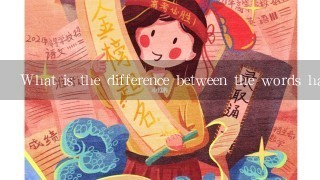What is the difference between the words happy and sad in their literary context?

Sure, here's the difference between the words happy and sad in their literary context:
Happy:
- Positive connotation: Happiness is associated with a sense of contentment, joy, and well-being.
- Emphasis on internal state: Happy usually refers to an internal state of being, a feeling of inner contentment or fulfillment.
- Often used to describe external circumstances: While happiness can be triggered by external events, it's often used to describe a state of being independent of external circumstances.
Sad:
- Negative connotation: Sadness is associated with a sense of pain, sorrow, and grief.
- Emphasis on external state: Sadness is often expressed through external behaviors and expressions, such as tears, sighs, and withdrawn behavior.
- Often used to describe internal states: While sadness can sometimes be a response to internal factors, it's often used to describe a state of being caused by external circumstances.
Additionally:
- Happy endings: Happy endings typically involve a restoration of equilibrium or a sense of inner peace.
- Sad endings: Sad endings often involve a sense of loss, pain, or unresolved conflict.
- Happy characters: Happy characters are often virtuous, optimistic, and self-assured.
- Sad characters: Sad characters are often flawed, pessimistic, and self-destructive.
Literary use:
- Happy and sad are often used together to create a sense of contrast or balance.
- They can be used to evoke a range of emotions in the reader.
- Happy can be used to create a sense of anticipation or excitement, while sad can be used to create a sense of tragedy or loss.
Ultimately, the difference between happy and sad lies in their emotional impact and the context in which they are used.





































































